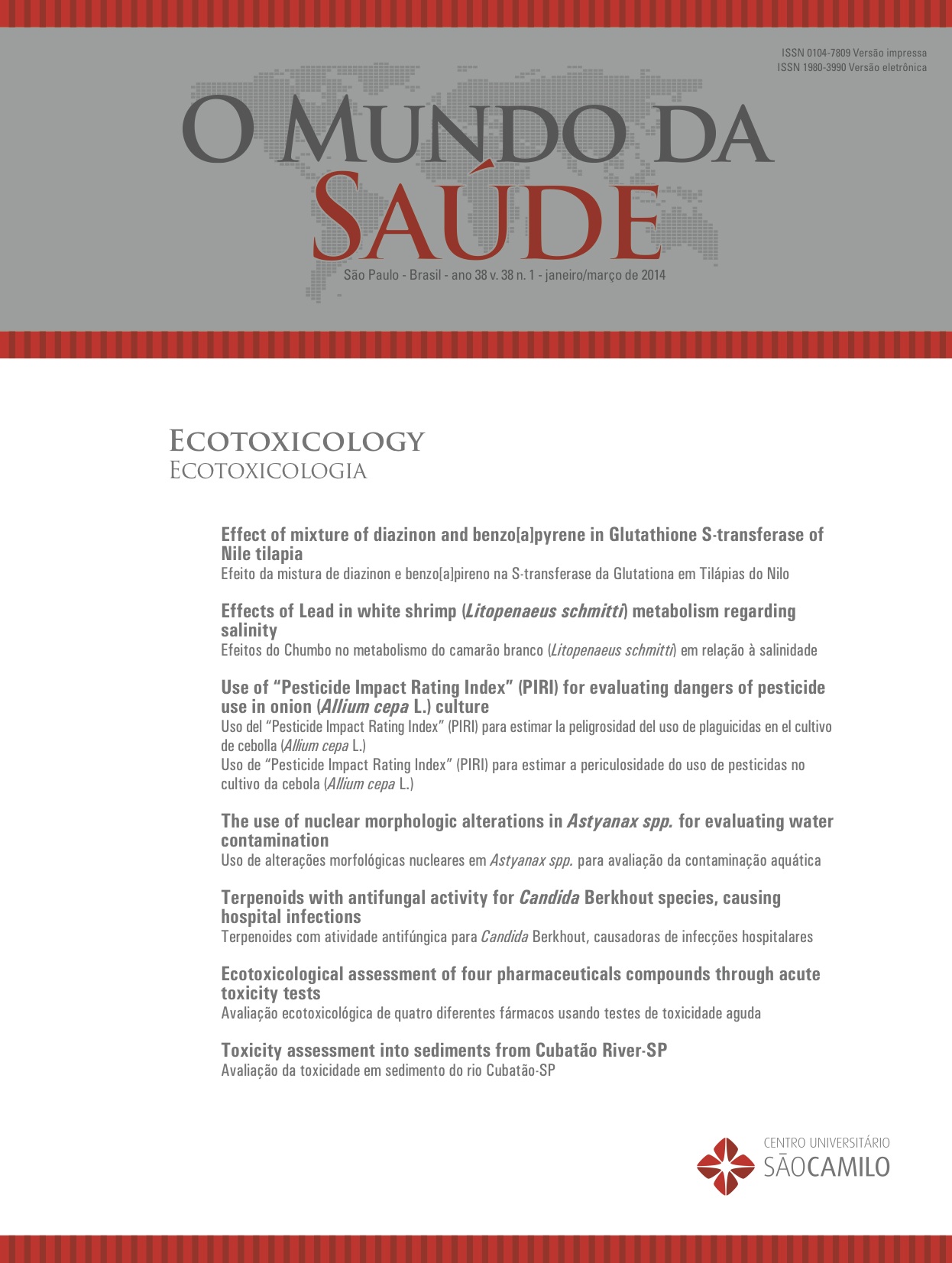Effects of Lead in white shrimp (Litopenaeus schmitti) metabolism regarding salinity
DOI:
https://doi.org/10.15343/0104-7809.20143801016023Keywords:
Litopenaeus schmitti, Lead, Oxygen Consumption, Ammonia, SalinityAbstract
Penaeid shrimps are important resources for worldwide fisheries and aquaculture. In Brazil, Litopenaeus schmitti is an
important commercially exploited species, and the ideal animal for studying the impairment caused by the effects of
heavy metals often detected in coastal areas. The main purpose of the present study was to detect the acute toxicity of lead
(Pb) in L. schmitti and to investigate its effect on oxygen consumption and ammonia excretion for different salinities. This
has not been studied in this species before. Lead was significantly more toxic at salinity 8 than at 20 and 33. The oxygen
consumption and ammonia excretion were estimated through experiments performed on each of the fifteen possible
combinations of three salinities (33, 20 and 8), at the temperature of 21 °C. Cadmium showed a significant improvement
in oxygen consumption at salinity 8, and results show that the oxygen consumption increases with respect to the lead
concentration. At the highest lead concentration employed (2.12 10-2 mg/L), the salinity 8 and the temperature at 21 °C,
oxygen consumption increases 131% in relation to the control. In addition, after separate exposure to lead, elevation in
ammonia excretion was obtained, which was 88.2% higher than the control. The results show that lead is more toxic to L.
schmitti at lower salinities.
Downloads
Downloads
Published
How to Cite
Issue
Section
License
Copyright (c) 2014 CC BY

This work is licensed under a Creative Commons Attribution 4.0 International License.






























